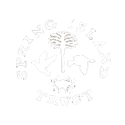Living with Wildlife
Awareness of the ecological value of bats is increasing because of the huge number of mosquitoes and other insects they consume. There are at least eight species of bats in the region. Some are colonial and others are solitary. The most common colonial bats on Spring Island are the free-tailed bat and the big brown bat. The most common solitary species on Spring Island are the Seminole bat, the evening bat, the southeastern myotis and the tri-colored (or pipistrelle) bat.
Commercial or homemade bat houses that are located on trees or wooden poles may be raided by rat snakes. Place the bat house on a metal or side of a building to help prevent this. Wooden purple martin houses or bluebird houses on poles can also be effective. The favorite daytime roost for the beautiful mahogany-colored Seminole bat is among the dead fronds of a cabbage palmetto. The Trust recommends leaving dead fronds on some of your cabbage palmettos to provide habitat for these bats.
At times bats select hollow columns on the exterior of homes as a roosting site. If the accumulation of guano within the columns causes an offensive odor, a reputable animal control company can remove the bats without killing them and plug up the entry points. This should be done in the early spring or late fall when there are not likely to be baby bats.

Copyright © Spring Island Trust
40 Mobley Oaks Ln. · Okatie, SC 29909 · 843-987-7008
Site by Sans Sheriff Studio
